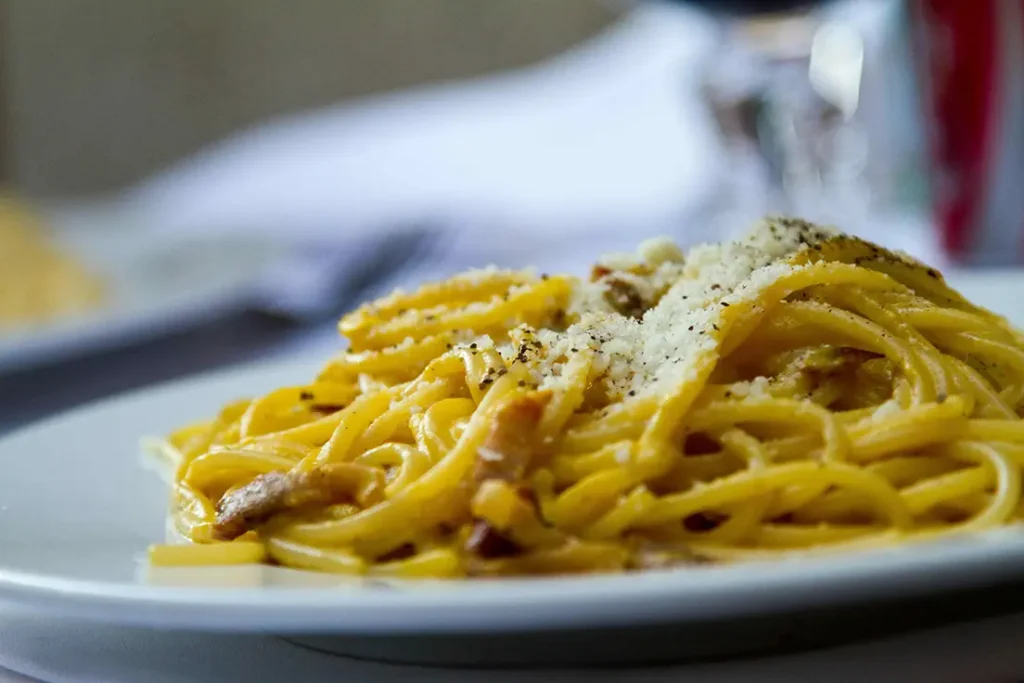
Traditional Lombardy dishes to sample
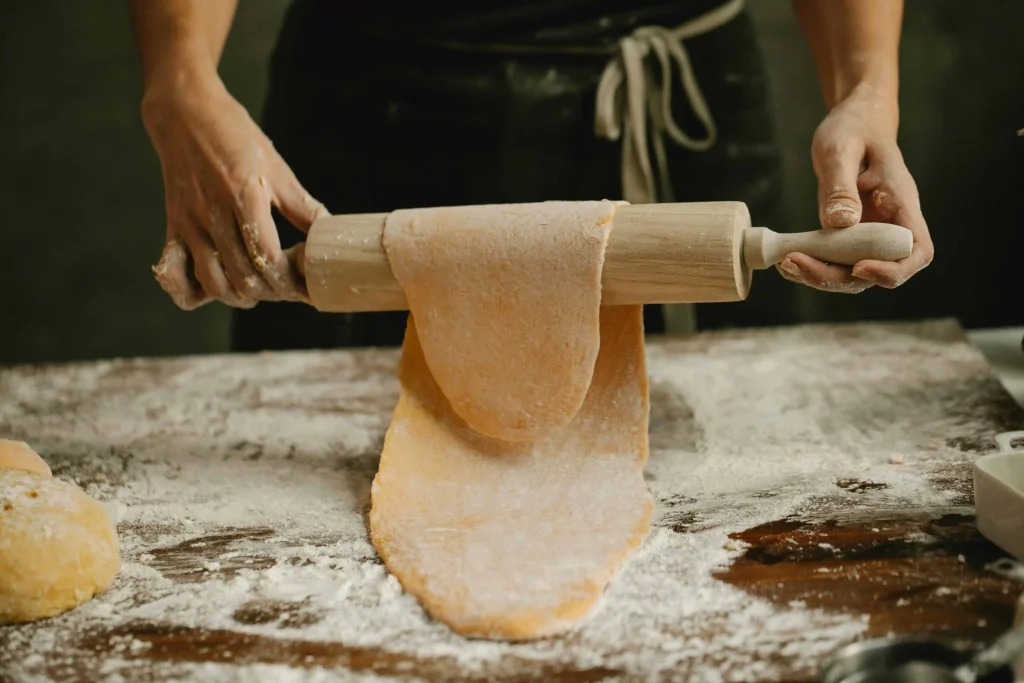
If you’re looking for great food and traditional recipes, Lombardy is the place for you: in this article we’ll explore some of the traditional flavors of Lombard cuisine. Treat yourself to some delicious flavors and recipes; there’s something for all tastes.
We’ve already mentioned some traditional Lombard dishes in one of our previous articles, which you can find HERE.
In fact, Lombardy has a remarkable gastronomic history, with an enormous range of top-quality ingredients. The region’s landscapes boast a variety of geographical characteristics, and these are reflected in many traditional recipes and flavors. Lakes, rivers, plains, mountains and more give rise to dishes that are renowned all over the world. In this article, we’ll present some typical Lombard recipes that you should try at least once in your life.
POLENTA
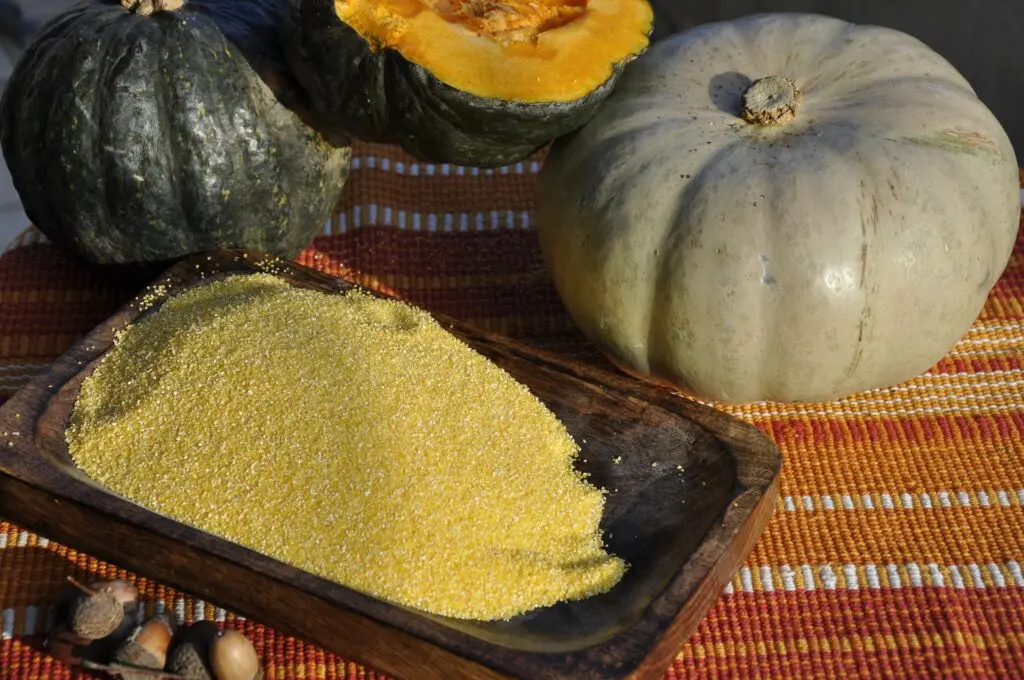
Polenta is one of the oldest dishes in the world. Indeed, it’s said to have graced the tables of the ancient Sumerians.
Over the centuries, however, every population has adapted the recipe, personalizing it and making it their own addition to all kinds of dishes.
In Lombardy today, polenta is made with coarse-ground maize or buckwheat, and the recipe is very simple: the flour is poured into boiling water and cooked for an hour in a copper pot, stirring continuously with a wooden spoon. Traditionally, the polenta is ready when it can be easily detached from the sides of the pot and poured onto a wooden board, ready to be sliced with a knife. It has a firm, yellow appearance, and it often accompanies cheeses and meats.
SBRISOLONA

Sbrisolona is a traditional cake from Lombardy, particularly the Mantua area.
Sbrisolona is a traditional cake from Lombardy, linked mainly with the Mantua area. Traditionally, it was made with hazelnuts, white flour and maize flour, sugar, butter and lard. It was originally a cake for celebrations and special occasions for the rural population during the 16th century. However, the Gonzaga court brought it onto the menus of Lombardy’s aristocracy. It’s a very crumbly cake, and this characteristic gave rise to its name.In the Lombard dialect, “sbrisa” means “crumb”. This cake is indeed very crumbly.
In line with tradition, we recommend pairing it with a glass of sweet liqueur.
MILANESE CUTLET

The Italian name “cotoletta alla milanese” comes from the Milanese dialect, in which the word “cuteleta” refers to the famous veal cutlet, coated in breadcrumbs and cooked in plenty of butter.
These details – veal and the use of butter – are essential in the time-honored tradition. Over the years, multiple variants of this famous recipe have been created, but true “meneghini” (Milanese people) will only eat it prepared in this way.
However, the guidelines don’t specify whether the veal should be on the bone or not – this is up to the diner who will savor the tender veal in its crispy egg and breadcrumb coating.
In Milan, you’ll find milanese in every traditional restaurant; we recommend taking a guided tour of the city to discover all its landmarks and, thanks to your tour guide, get recommendations for the best restaurants.
SCIATT VALTELLINESI
A traditional dish with an unmistakable flavor, fried and filled with Casera cheese: we present Sciatt Valtellinesi.
It’s a specialty of the province of Sondrio and the entire Valtellina area. These fritters are a typical appetizer in the region; however, not everyone knows that although these days they are served with wild leaves, they were once a breakfast dish!
Sciatt are famous as a tasty street food; a favorite snack after a walk or a day on the ski slopes. The base is a mixture of white flour and buckwheat flour, combined with beer. The batter is filled with Casera cheese and cooked in oil. One trick is the addition of grappa: this gives the mixture a special flavor, adding to its reputation all over the world. The name Sciatt, in the local dialect, means toad, reflecting the golden color of the fritters.
If you’re curious to explore Valtellina, we recommend a wine tasting, which you can find by clicking HERE.
MOSTARDA

Mostarda is a typical side dish from the provinces of Cremona and Mantua: it’s a combination of mustard, sugar and fruit. Mostarda is often paired with boiled meats, cold cuts and cheeses, and has a very distinctive flavor, with the sweetness of the fruit and the spicy flavor of mustard.
In any case, Cremonese mostarda differs from Mantuan mostarda. The latter uses only one type of fruit (e.g. pumpkin or green apples) and has a milder and less spicy taste, because mustard is added only at the end of cooking. If you’d like to discover the city of Mantua, click HERE for a guided tour.
In contrast, candied, ripe and green fruits are all used in Cremonese mostarda, creating different textures and flavors: cherries, figs, apples, apricots and plums are often included in this version.
Risotto alla Milanese
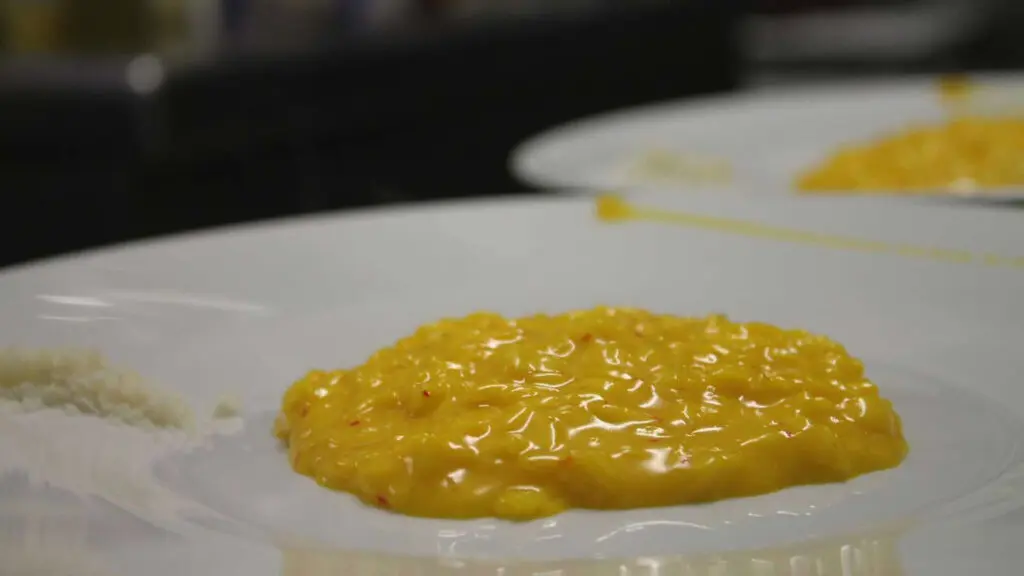
If you travel to Milan you have to try risotto alla milanese, a timeless classic of Milanese cuisine, universally loved in Italy and abroad.
Legend has it that the origins of the dish date back to the second half of the 16th century and are linked to the construction of Milan Cathedral.
The Flemish artist Valerius of Flanders came to Milan to create the wonderful stained glass windows that we can still admire today during a guided tour. With him came his pupil, known as Zafferano (in English, Saffron). He earned the nickname because of his habit of using this spice to make his colors brighter. One day Valerius told his young assistant that if he continued like that, he would end up putting saffron even in the food.
And it was on the occasion of the wedding of Valerius’ daughter that Zafferano asked the cook for a small variation in the menu: namely, to add a generous pinch of saffron to the buttery rice dish.
The result? The guests liked the change, both for the bright yellow color and for the flavor. Was it a simple prank or a lack of respect? This we don’t know, but we like to think that it’s more than just a legend.
Today, risotto alla milanese is served in numerous ways and variations, both traditional and innovative. What’s certain is that one of the most popular variants is undoubtedly risotto served with the famous ossobuco alla milanese, another traditional Milanese specialty.
Ossobuco alla Milanese
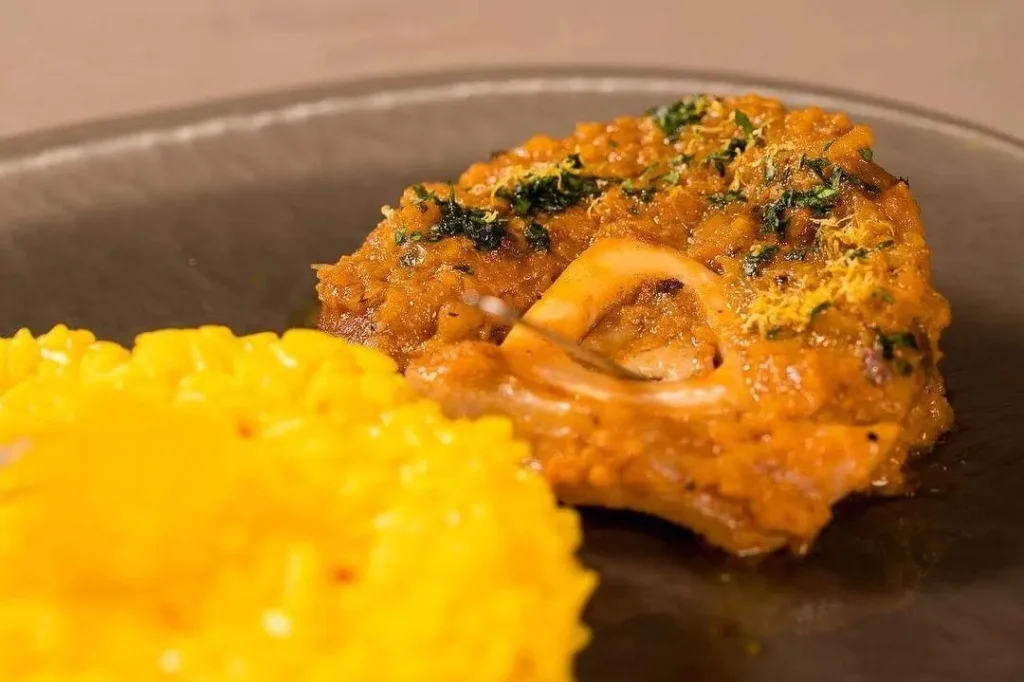
Also known as “òs bus” (bone with a hole), in the local dialect, the earliest transcriptions of the recipe for ossobuco date back to the 19th century, although some say it could be 500 years older.
In fact, even then there was talk of a specific cross-cut of meat with the bone containing the marrow, braised for many hours and much loved by the aristocracy of the time.
If you’re curious to taste this dish, you should stop for lunch or dinner at La Dogana del Buongusto in Milan.
Casoncelli
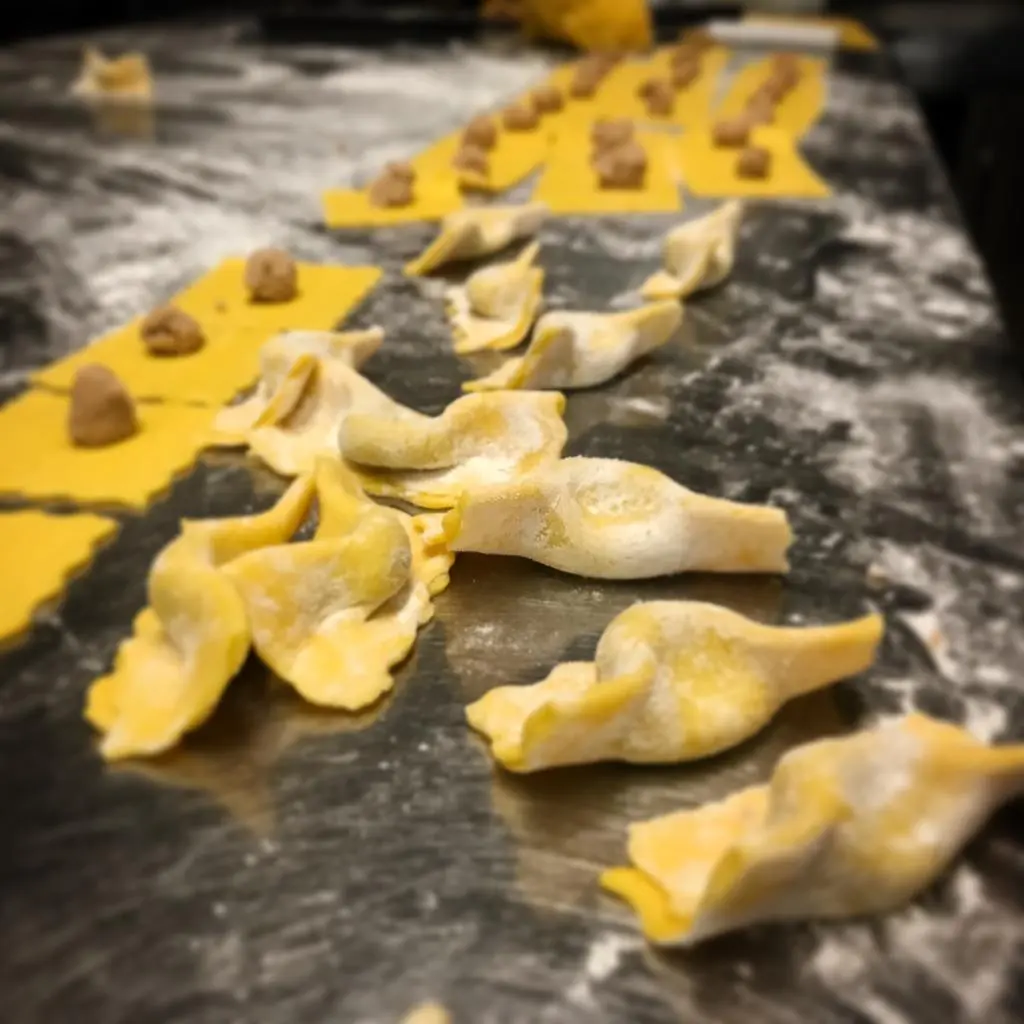
When you’re in Bergamo or Brescia, you absolutely must try a delicious plate of casoncelli, in dialect “casonsèi“, one of the best-known traditional dishes of Bergamo and Brescia, along with polenta.
This is a special type of fresh filled pasta, and although the name is identical, casoncelli from Bergamo are different from the Brescia version. Bergamo’s casoncelli have a thicker pasta and a meat and cheese filling. When cooked, they’re seasoned with crispy pancetta, butter and sage. Meanwhile, casoncelli from Brescia tend to have a thinner dough that showcases a filling of bread, butter and Grana Padano cheese; they are dressed with plenty of butter, sage and more Grana Padano.
This traditionally humble dish – especially the Bergamo version – arose from the need to use up leftover beef and pork and avoid waste.
If you want to taste the perfect dish of home-made casoncelli, drop in at Hotel & Ristorante Aurora in Castione della Presolana, in the Bergamo mountains of Val Seriana.
Pizzoccheri
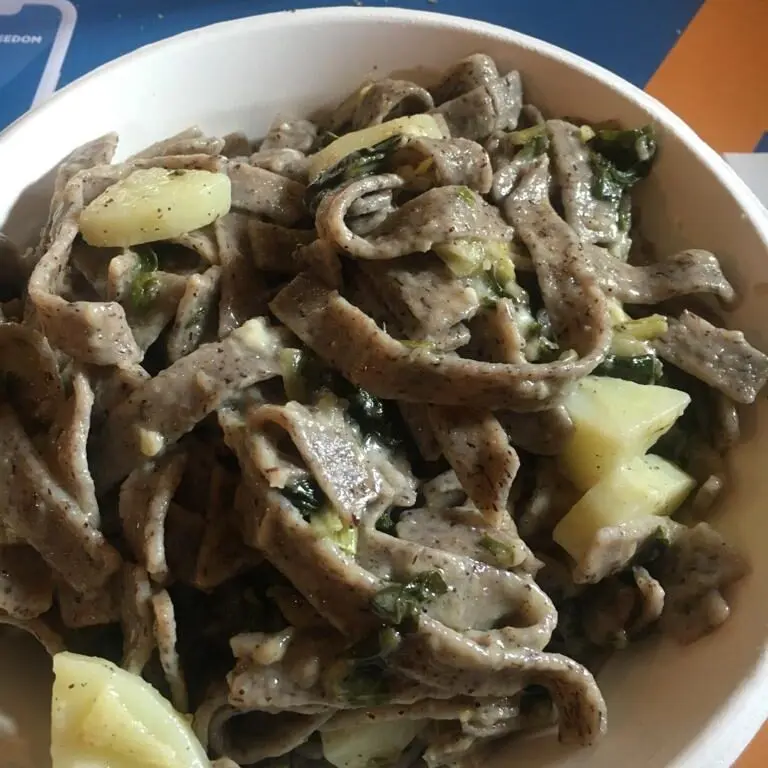
If you’re traveling through Valtellina, make a point of stopping to sample a delicious plate of pizzoccheri accompanied by a glass of local wine. The main ingredient of pizzoccheri is buckwheat flour, which is native to this very place.
There’s no specific date for the origin of this dish, but there are a number of culinary references from the late 18th century to the Grisons canton of Switzerland, which Valtellina belonged to at that time. In these, the author mentions a dish called “Perzockel”, a kind of noodle made from buckwheat. When cooked, the pasta was topped with plenty of butter and local cheeses.
A dish very similar to the present form appears on the tables of wealthier farmers from the early 19th century, with the addition of potatoes, cabbage or chard.
Today, pizzoccheri are considered the signature dish of Valtellina, their epicenter being the small village of Teglio, where an emotional bond has grown up between the dish and the local population; they even set up the Teglio Pizzocchero Academy.
One of the many restaurants where you can enjoy pizzoccheri cooked according to the original certified recipe using top-quality Valtellina ingredients is Agriturismo Il Vecchio Torchio in Teglio.
Mantuan pumpkin tortelli
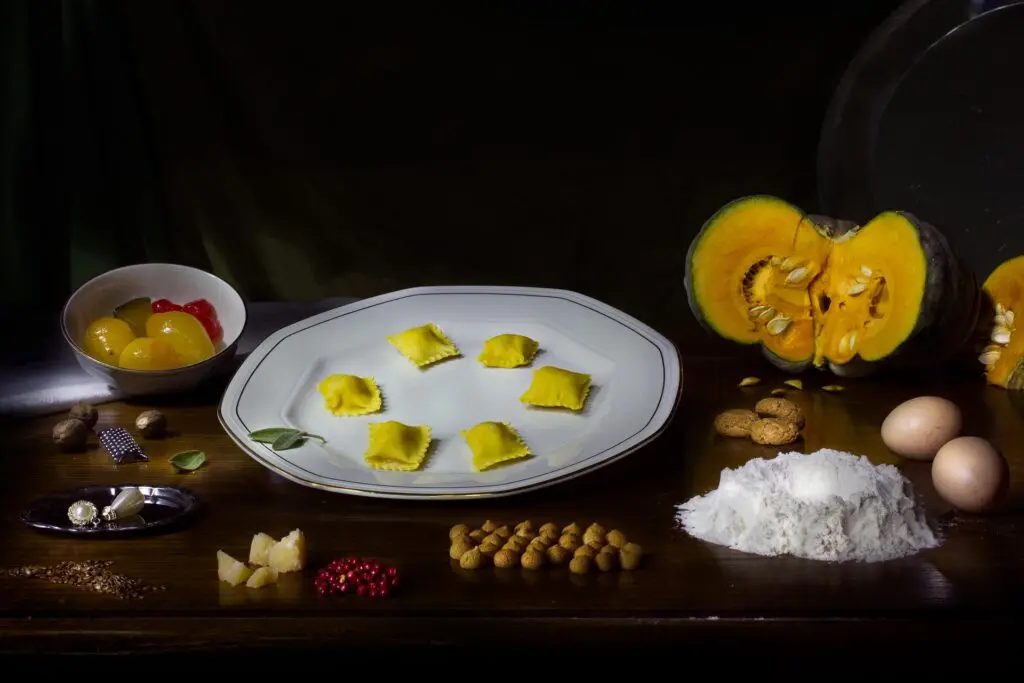
The Mantua area, birthplace of the Gonzaga family, boasts many excellent dishes, including the famous pumpkin tortelli.
The recipe dates back to the late Middle Ages when the rural economy was poor, so a tasty dish was invented to use up leftovers. In fact, this is the reason behind the combination of very different, often bold flavors, with the sweetness of pumpkin and amaretti paired with mostarda and Parmigiano Reggiano. And it’s this that creates the perfect balance between sweet and savory in this dish, made with the four classic ingredients of the Mantua area.
Casseoula
Casseoula is the quintessential winter dish of the Varese and Brianza area.
Its name is of dubious origin, but is thought to be related to the utensils used in its preparation:
- the ladle, also called “cassoeu“
- the “casseruola“, the pan used to cook the meat.
This dish is traditionally associated with the feast of Sant’Antonio Abate on January 17, the day that marked the end of the pig slaughtering season.
Legend has it that the dish was invented during the period of Spanish rule in Lombardy in the late 16th century, when a Spanish soldier fell in love with a young Lombard cook. The soldier taught his lover how to prepare this dish, and she served it at a banquet for the noble family he worked for; they liked it so much that the recipe circulated.
Today, casseoula is mainly cooked in winter. The ingredients, which include pork scraps (trotters, tail, ears and skin) combined with Savoy cabbage, make this dish perfect for cold, foggy Lombardy evenings.
Torrone Cremonese
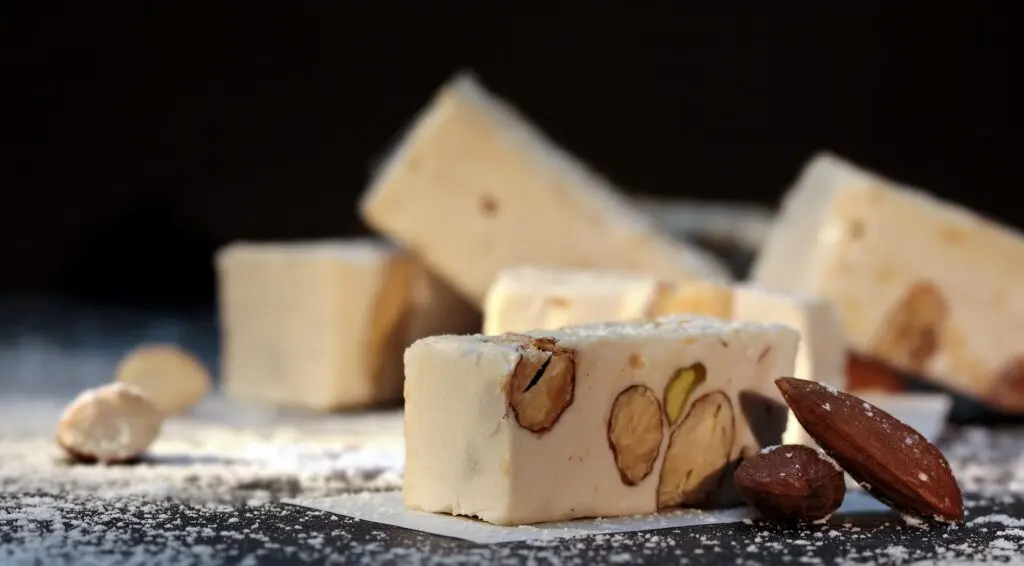
If you visit Cremona, you should definitely sample the famous Cremonese nougat, a typical Christmas sweet made from egg whites, honey, sugar and almonds.
Its origins are unclear: some claim it dates back to the 12th century, when a Cremonese man translated an Arabic text explaining how to make “turun”; others attribute the arrival of nougat in Italy to the court of Frederick II and his Arab cooks. It is almost certainly of Arabic origin.
In Italy, however, there’s one date that marks the official birth of torrone cremonese: 1441, the year in which Francesco Sforza and Bianca Maria Visconti were married and served nougat in the shape of the Torrazzo bell tower of Cremona to their guests.
Today this sweet is a well-established tradition, celebrated in November each year with the Festa del Torrone.
PAN DE MEJ
An ancient tradition of Milanese cuisine is the preparation of millet cake around April 23 in honor of St. George.
This cake is flavored with elderflower and is also known as “Pan Meino.” It has a crisp, crumbly texture and a deliciously sweet flavor.
As its dialect name “Pan de Mej” suggests, the main ingredient is millet. Millet is a humble cereal that was used instead of wheat flour in Lombard baking.
The history of this typical cake is linked to April 23: according to legend, St. George killed a dragon to save a maiden. It’s said that the 14th-century Lord of Milan Luchino Visconti had similar courage to the saint, for on April 23 he sided with the Milanese against the ferocious brigand Vione Squilletti, who was terrorizing neighborhoods in the south of Milan. At the end of the battle, to celebrate the heroic Visconti, the Milanese took to the streets bearing cream and pan de mej.
Discover our food and wine experiences !
Categories
Art & Culture City Break Family Friendly Food & Wine Outdoor Rainy Day Romantic UncategorizedFeatured posts
-
Three days to fall in love with Florence
Art & Culture
-
Summer food and wine trip
Food & Wine
-
UNESCO sites in Piedmont
Art & Culture
